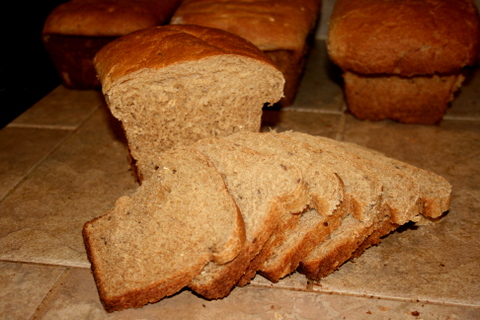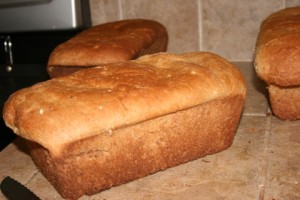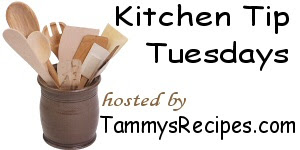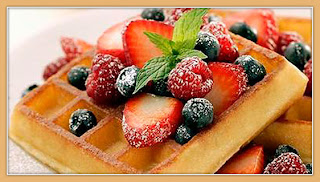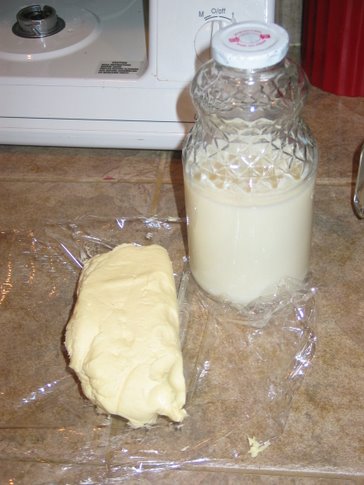 I had such a blast making my own butter yesterday! Yes, that is right! I made my own homemade butter. At first I thought it must be so difficult and time consuming to do it, but boy was I vastly mistaken. It was so easy and well worth it for the wonderful taste! It is cheaper and fresher this route!
I had such a blast making my own butter yesterday! Yes, that is right! I made my own homemade butter. At first I thought it must be so difficult and time consuming to do it, but boy was I vastly mistaken. It was so easy and well worth it for the wonderful taste! It is cheaper and fresher this route!
INGREDIENTS:
4 cups of heavy cream (raw is preferred, but pasteurized is okay, not ultra-pasteurized) – I skimmed the raw cream off the top of my raw milk I get from a local farm (Read more about the benefits of raw milk here). From 1 1/2 gallons of milk I got 2 1/2 cups of raw cream, I could then just make it out of this, but I went ahead and added some pasteurized cream.
1/2 tsp. salt
Makes 1/2-3/4 lb. of butter and 1/2 quart of buttermilk
I used by Bosch Mixer (my favorite appliance!), but I am sure you could use a KitchenAid or other mixer.
1. Fit your mixer with the plastic beater, or whisk. Blend. The cream will go through the following stages: Sloshy, frothy, soft whipped cream, firm whipped cream, coarse whipped cream. Then, suddenly, the cream will seize, its smooth shape will collapse, and the whirring will change to sloshing. The butter is now fine grained bits of butter in buttermilk, and a few seconds later, a glob of yellowish butter will separate from milky buttermilk. It took about 15 minutes in my machine (I let it do it’s thing while I fed Karis). See the pictures below.
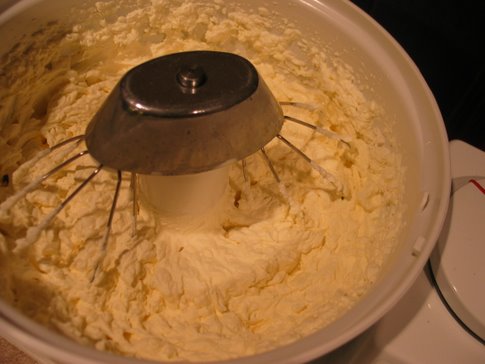
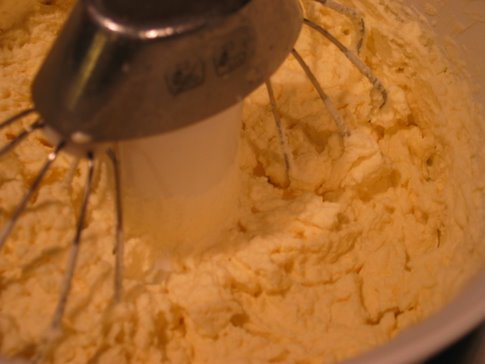
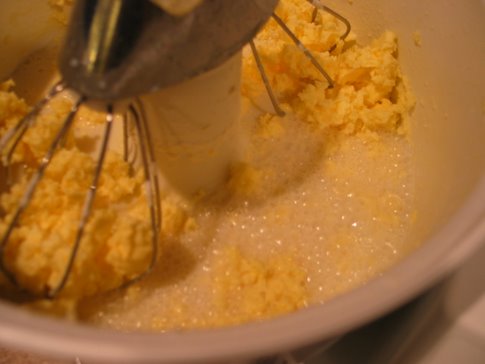
2. Drain the buttermilk. Keep for other uses as it is perfectly good raw buttermilk.
3. Add 1/2 cup of ice-cold water, and blend further. Discard wash water and repeat until the wash water is clear (it took me 3-4 times).
4. Add 1/2 tsp of salt, to taste, if desired.
5. Squeeze out excess water. Take the butter out of the mixer and place on paper towels (or put on a clean towel as I did, since I do not have paper towels) and squeeze out any excess water. You can also place it in another bowl and use two forks or a potato masher to work out the excess water, pour out the water. Another option: put in large covered jar, and shake or tumble. Continue working, pouring out the water occasionally, until most of the water is removed.
6. Store. The butter is complete! Wrap up in wax paper, or place in a butter plate, or some other container. I froze mine in small glass jars to preserve it longer.
ENJOY! TASTES FABULOUS!
UPDATE 4/7/08 -After much experimenting, I have discovered that homemade butter doesn’t last long at all before spoiling, due to the difficulty it is to remove all the butter fat. It does work well to freeze in portions.
 Mountain Rose Herbs is a wonderfully superior source of organic unrefined and refined coconut oil, and at the best price around! At $41 per gallon, it is significantly cheaper than even Azure Standard (which is around $34 for 1/2 gallon). If you are interested in hearing more about this excellent oil and its multiple uses, check out these posts.
Mountain Rose Herbs is a wonderfully superior source of organic unrefined and refined coconut oil, and at the best price around! At $41 per gallon, it is significantly cheaper than even Azure Standard (which is around $34 for 1/2 gallon). If you are interested in hearing more about this excellent oil and its multiple uses, check out these posts.